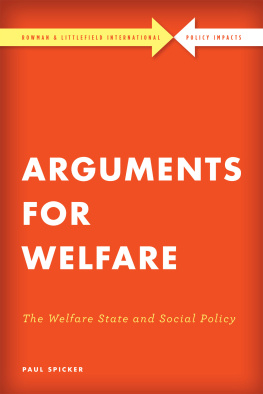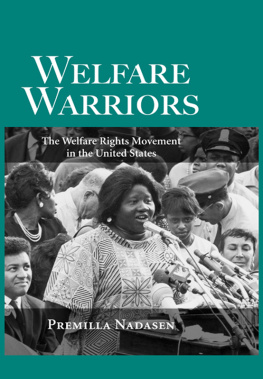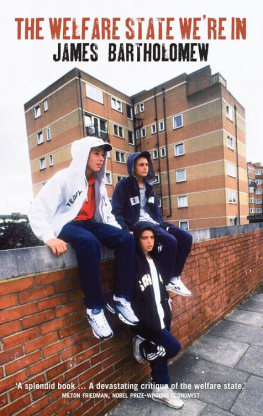

First published in Great Britain in 2015 by
Policy Press University of Bristol 1-9 Old Park Hill Bristol BS2 8BB UK Tel +44 (0)117 954 5940 e-mail
North American office: Policy Press c/o The University of Chicago Press 1427 East 60th Street Chicago, IL 60637, USA t: +1 773 702 7700 f: +1 773-702-9756
Policy Press 2015
The author and publisher wish to thank John Wiley & Sons Ltd for permission to reproduce the images on page 157.
British Library Cataloguing in Publication Data
A catalogue record for this book is available from the British Library
Library of Congress Cataloging-in-Publication Data
A catalog record for this book has been requested
ISBN 978-1-4473-1655-8 Hardcover
ISBN 978-1-4473-2128-6 ePub
ISBN 978-1-4473-2129-3 Mobi
The right of Geoffrey DeVerteuil to be identified as author of this work has been asserted by him in accordance with the Copyright, Designs and Patents Act 1988.
All rights reserved: no part of this publication may be reproduced, stored in a retrieval system, or transmitted in any form or by any means, electronic, mechanical, photocopying, recording, or otherwise without the prior permission of Policy Press.
The statements and opinions contained within this publication are solely those of the author and not of the University of Bristol or Policy Press. The University of Bristol and Policy Press disclaim responsibility for any injury to persons or property resulting from any material published in this publication.
Policy Press works to counter discrimination on grounds of gender, race, disability, age and sexuality.
Cover design by Qube Design Associates, Bristol
Front cover image: Geoffrey DeVerteuil
Readers Guide
This book has been optimised for PDA.
Tables may have been presented to accommodate this devices limitations.
Image presentation is limited by this devices limitations.
To the voluntary-sector organisations for the gift of time, to Stephanie for the gift of patience, to Laurent-Joseph DeVerteuil (19162009) for the gift of perseverance and generosity, which moves the spirit of this book
It is a vast labour one must expend ones mind and soul generously, keeping nothing back
Vasily Grossman, Life and Fate
So, now vee may perhaps to begin, yes?
Philip Roth, Portnoys Complaint
It is not those who can inflict the most but those who can endure the most who will prevail
Mural, West Belfast (attributed to Terence MacSwiney, 18791920)
There comes a time when the cup of endurance
runs over
Martin Luther King Jr
Contents
Tables
Figures
4.1 | Inner London and case study boroughs |
4.2 | Inner Sydney and case study areas |
4.3 | Inner-city Los Angeles and case study zip codes |
Geoff DeVerteuil (PhD Southern California, 2001) is senior lecturer at Cardiff University in the School of Planning and Geography. His research is at the grand intersection of inequality, its spatial expressions and its management within cities. He is interested more specifically in inequality as it manifests itself in terms of mental health, substance abuse treatment, homelessness, precarious migrants, gentrification and the voluntary sector. More recently, he has focused on the forces arrayed against inequality, including a critical articulation of social and spatial resilience, a focus which animates this book.
This book has had, even by academic standards, an unusually long gestation period. The personal motivations lay in my PhD work at the University of Southern California (19952001), where I immersed myself in the sage advice of Jennifer Wolch and Michael Dear, and future colleagues such as Robert Wilton, Wei Li, Jurgen von Mahs and Melissa Gilbert. Even back then, I was fascinated by phenomena from bygone (and perhaps more equitable) eras that uncannily persisted into the modern age in the deep recesses of the (global) city how? Why? Why some phenomena and not others? And, in particular, why so many left-behinds in the inner city, the antipode of where I grew up in suburban Montral but an enduring source of fascination? When I came to the UK in 2007, I obtained funding from the Nuffield Foundation and the British Academy to pursue these questions, expanding to consider current, persistent and recurring threats to urban relics in the form of concentrated voluntary-sector hubs. Indeed, I could never have imagined that even the backwaters of Downtown Los Angeles, 10 years after my PhD research, could also be experiencing displacement pressure via gentrification. I began with a comparison of the spatial displacement of the voluntary sector in London and Los Angeles, which expanded to Sydney in 2011 with funding from the Worldwide Universities Network. The early ideas and proposals were critiqued at a variety of talks spanning three continents: the National University of Singapore (2011), the University of Alberta and the University of Calgary (2012), and Kings College London (2013). Many thanks also to those publishers who rejected the proposed work but who further sharpened the arguments, leading to a variety of revelations that shifted the focus from displacement to resilience.
Once in the field those places in the shadows of a gentrifying and glamorising inner city, in the ordinary spaces of the global city-region I found myself grappling with the common issue of how, and how deeply, to know a city, which is essential when undertaking comparative work (but whose complexities not always acknowledged, and the logistics of which can be tricky). I know LA well, to the point of obsession, London too, as it is but a 75-minute journey away, but am at a disadvantage with Sydney. So, in reverse order, the following thanks are due. In the Antipodes, I extend my profound gratitude to Thomas Baker, David Conradson, Luke Craven, Kurt Iveson, Robin Kearns and Wendy Shaw. In the UK, I am thankful to the following people: Nick Clarke, James Marshall, Jon May, Christine Milligan, Andrew Power, Paul Watt and Andy Williams. Emily Watt and Laura Vickers at Policy Press have been especially helpful in getting the book to its final fruition. In particular, Emma Tompkins seminars on resilience at the University of Southampton were helpful in developing my conceptual approach. Kanchana Ruwanpuras friendly chiding was also a source of inspiration. Finally, in Los Angeles, I extend my thanks to Ellen Reese and Ernest Savage, Lois Takahashi and Jennifer Wolch. Part of this work has already been published in International Journal of Urban and Regional Research (2010) Urban Studies (2011), Urban Geography (2011), Social and Cultural Geography (2011), Area (2012) and Antipode (2014). Gratitude to Elvin Wyly for writing a testimonial both pithy and coaxing.
A final thanks to my infinitely patient and long-suffering Stephanie. All solecisms, shibboleths and blandishments are mine alone.
The focal point for this book is the how of resilience, the on-the-ground processes surrounding the fate of residual inner-city areas deemed service hubs (for example, clusters of voluntary-sector organisations) faced with the threat of gentrification-induced displacement. Put as a question, what accounts for their resilience when other arrangements of collective consumption (especially social housing) have been severely curtailed or fallen by the wayside entirely? After all, even those most convinced of pervasive neoliberalism acknowledge that residual mechanisms of support, survival and staying put from bygone eras persist in the city it is just that they ignore or assume away the resilience inherent in this process, the actual means of resilience, the agents of resilience, the consequences of such resilience and how these tendencies may differ comparatively. These empirical and conceptual gaps will map on to five cornerstones that structure the book: neoliberalism and post-welfarism as the context and the threat; resilience as the response and the organising concept; the voluntary sector as the agent; the inner city as the territorial focus; and comparison as the method. Empirically and comparatively, I wish to see how processes of resilience play out across 10 different inner-city neighbourhoods in three global city-regions (London, Los Angeles and Sydney), in an attempt to learn from these places, alert to differences and similarities.









